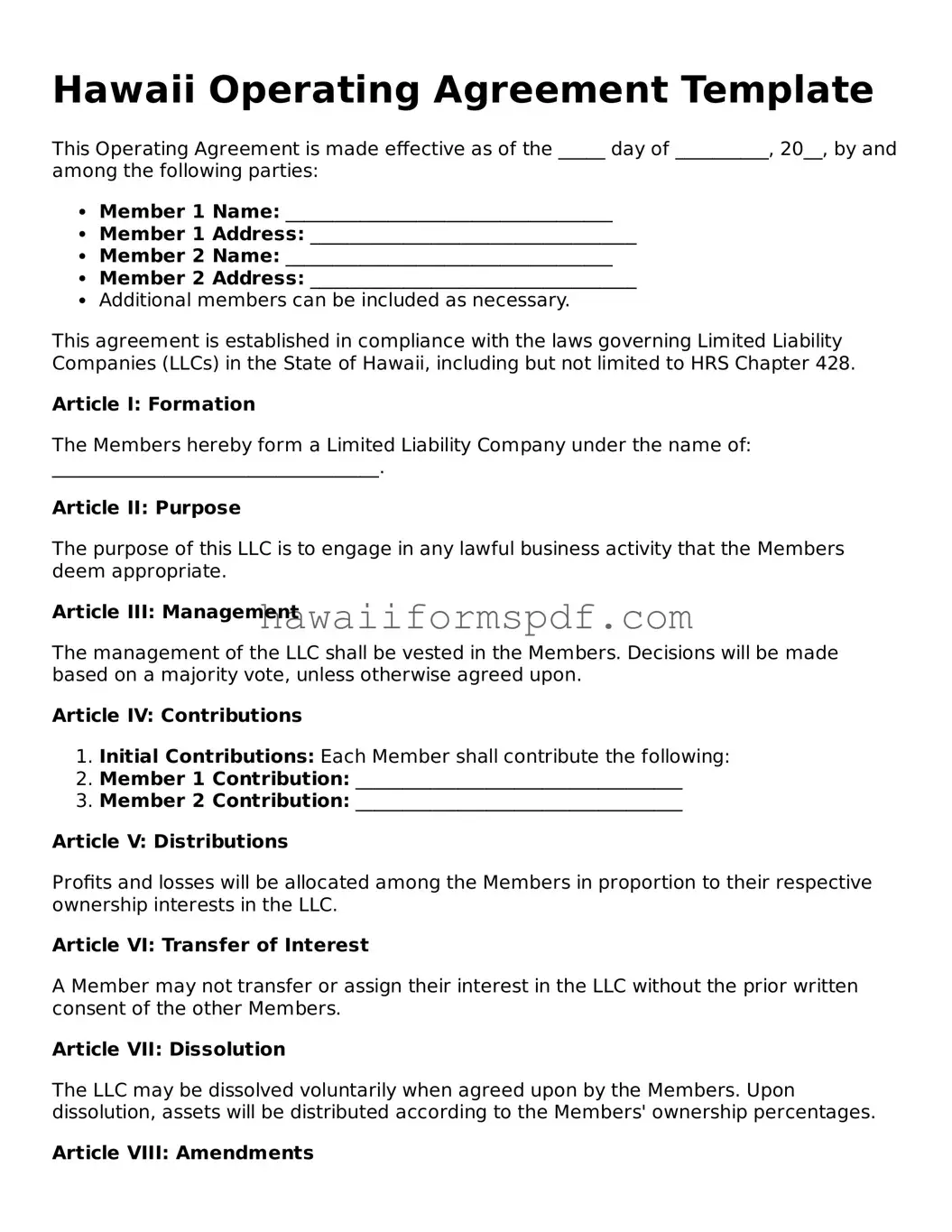Hawaii Operating Agreement Template
This Operating Agreement is made effective as of the _____ day of __________, 20__, by and among the following parties:
- Member 1 Name: ___________________________________
- Member 1 Address: ___________________________________
- Member 2 Name: ___________________________________
- Member 2 Address: ___________________________________
- Additional members can be included as necessary.
This agreement is established in compliance with the laws governing Limited Liability Companies (LLCs) in the State of Hawaii, including but not limited to HRS Chapter 428.
Article I: Formation
The Members hereby form a Limited Liability Company under the name of: ___________________________________.
Article II: Purpose
The purpose of this LLC is to engage in any lawful business activity that the Members deem appropriate.
Article III: Management
The management of the LLC shall be vested in the Members. Decisions will be made based on a majority vote, unless otherwise agreed upon.
Article IV: Contributions
- Initial Contributions: Each Member shall contribute the following:
- Member 1 Contribution: ___________________________________
- Member 2 Contribution: ___________________________________
Article V: Distributions
Profits and losses will be allocated among the Members in proportion to their respective ownership interests in the LLC.
Article VI: Transfer of Interest
A Member may not transfer or assign their interest in the LLC without the prior written consent of the other Members.
Article VII: Dissolution
The LLC may be dissolved voluntarily when agreed upon by the Members. Upon dissolution, assets will be distributed according to the Members' ownership percentages.
Article VIII: Amendments
Any amendments to this Operating Agreement must be in writing and signed by all Members.
IN WITNESS WHEREOF, the Members have executed this Operating Agreement as of the day and year first above written.
Member 1 Signature: ________________________ Date: ______________
Member 2 Signature: ________________________ Date: ______________
This document is a template and is meant for informational purposes only. Consider consulting with a legal professional for tailored advice.
